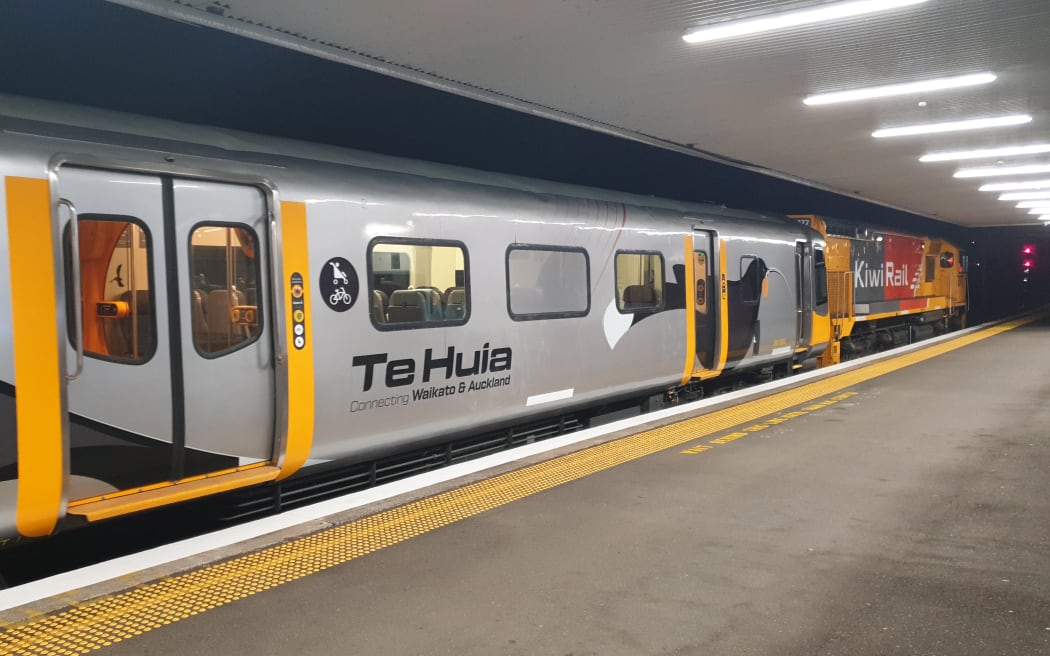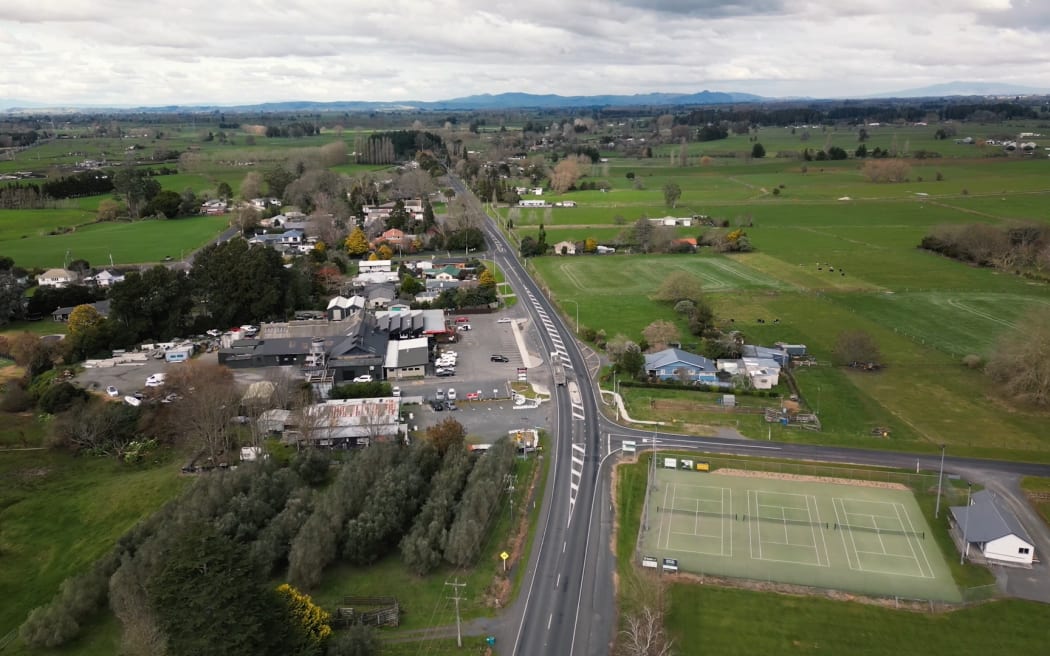How does Te Huia's subsidy compare to roads?
Te Huia train. Photo: RNZ / Gill Bonnett
It is mid-afternoon in Hamilton and Te Huia is pulling in, ready to take travellers up to Auckland. They are some of the 72,026 passengers who have used the service in the last twelve months.

"From Auckland I come down here and back once a week," one passenger said, adding he hoped the government didn't cancel it.
Another passenger, who had been visiting from Switzerland, said he wanted to see some of the scenery of the country on his way back to Auckland.
RNZ even found a passenger who takes it most days.
"Monday to Thursday for study," he said.
Earlier this month, Transport Minister Simeon Brown told Morning Report the Hamilton to Auckland train service was one of the most heavily subsidised public transport services in the country.
Compare this to a statement in 2018 by then Waikato Regional transport committee chairperson Hugh Vercoe, who said Te Huia was the cheapest way of getting people from Waikato to Auckland.
So which is it?
The commuter train service cost $68.7 million to set up and has a running budget of $29.3m over five years.
NZTA figures show last financial year, each passenger trip was subsidised $84 from the transport agency and local councils. This sounds like a lot, but the journey is approximately 113 kilometres, so that works out to be about 75 cents of subsidy per passenger kilometre.
Compare this to an Auckland passenger train. NZTA figures show the subsidy per person using the Auckland Metro train service last financial year was $12, but with an average trip of 12 kilometres - it worked out to $1 of subsidy per passenger kilometre.
Per kilometre investment then, Te Huia is actually cheaper.
Despite this, Stuart Donovan from Motu Research said there was no doubt that Te Huia was highly subsidised. However, roads were too, he said, especially roads of national significance.

Waikato Expressway. Photo: RNZ / Nick Monro
For example, Waikato Expressway was another way people could get from Hamilton to Auckland and was classified as a road of national significance.
The 102km road cost $2.4 billion, so each kilometre cost on average, $23.5m to build - nearly as much per kilometre as Te Huia's whole five-year operational budget.
"Ultimately we're spending dollars, and I would apply a much higher level of scrutiny - and I would have thought the government would too - to projects which cost billions of dollars compared to projects which cost $30m," Donovan said.
It was not clear to him, however, that there was a focus on how much each user of any road was contributing to it.
"That gets to the heart of the problem, I think, that the government faces from taking this line about subsidies. If you were to analyse the subsidies for the road projects, some of the highway projects that have been proposed, you would find that they are extraordinarily highly subsidised."
Minister for Transport Simeon Brown said money to build state highways comes from the National Land Transport Fund. Primarily, it sourced its funds from fuel excise duty, road user charges, vehicle and driver registration and licensing, state highway property disposal and leasing, and road tolling.
"Of course the government also funds it through Crown grants, there is also a Crown loan that we are proposing the the land transport [government policy statement]," Brown said.
He noted about 60 percent of the fund currently came directly from users, and that ultimately, the government would like a long term solution where people who use a road pay for it fully.
Public Transport Users' Association coordinator Jon Reeves said the government should be looking to trucks, not trains, if it was concerned about subsidising transport users.
"It we are going to make public transport far more user paid, then let's make trucks pay 100 percent of the damage they do to our roading network," he said.
He pointed to research that shows trucks cause most potholes and that New Zealand allows very heavy trucks on the road. However, heavy vehicles (which weight more than 3.5 tonnes) paid only about 28 percent of road user charges in the 2022-2023 financial year.
Despite indications from the minister that the Te Huia subsidy was too high, users of the train service say it is an invaluable way of linking two of the country's largest cities and keeping hundreds of vehicles off motorways each day.













































